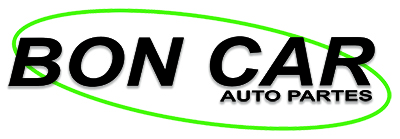The green layer is the layer of implementation or the Infrastructure layer. All the service methods, repositories, and dependency injections are implemented in this layer. The focus of the Onion architecture on using dependency inversion is as you said… It might help to think of it as “protecting the parts of your code that are least likely to change, from parts that are more likely to change”. So, for your case, would changes “below” the facade require changes to your “domain” code?

Then, we explained how we can connect all of the layers using an ASP.NET Core Web API. We have connected all of our Onion architecture implementation layers, and our application is now ready for use. As we can see, it consists of the Web project, which is our ASP.NET Core application, and six class libraries. The Domain project will hold the Domain layer implementation.
Benefits of Onion Architecture
You could go through them to understand the core concepts and to learn how everything works. We will do a simple test to ensure that our solution works. I will just create a new product and make a request to query all the existing products as well. You can see that we are adding the API Versioning data to the route attribute and also creating an IMediator object.

Honestly, it’s not completely new, but I’m proposing it as a named, architectural pattern. Patterns are useful because it gives software professionals a common vocabulary with which to communicate. There are a lot of aspects to the Onion Architecture, and if we have a common term to describe this approach, we can communicate more effectively.
Introducing fullstackhero – .NET 6 WebAPI Boilerplate
If a process or domain layer couples itself with infrastructure concerns, it is doing too much and becomes difficult to test. Especially this layer should know close to nothing about infrastructure. Infrastructure is only a plumbing support to the business layer, not the other way around. Development efforts should start from designing the domain-code and not the data-access, the necessary plumbing should be an implementation detail. The onion architecture, introduced by Jeffrey Palermo, puts the widely known layered architecture onto its head.
Best diet for 2023 is the science-backed Mediterranean style of eating – CNN
Best diet for 2023 is the science-backed Mediterranean style of eating.
Posted: Tue, 03 Jan 2023 08:00:00 GMT [source]
Before we explore the promised benefits of layers and how they represent themselves in software architecture, we need to get rid of a common misconception regarding layers vs. tiers. This makes your application extremely dynamic because you can easily do things like change your platform, change to micro services, and then maybe change back to a monolith. Yes that’s not a likely scenareo by any means, but for huge applications, this can be extremely convenient. All you have to do is re-write your infrastructure logic but your core business logic remains untouched. Drilling down deeper into the domain layer makes this issue more apparent.
Solution Structure
Therefore the sample adheres the strict layering principles. Instead of getting the best out of the benefits of the layered architecture style, we end up with several layers dependent on the layers below it. For example giving the previous layering structure the presentation layer depends on the application layer and then on the domain layer and finally on the database layer.
I hope that presence of CoreUtils in the solution helps you to avoid an excessive interfaces creation. This might be the way to reconcile between the ‘architecture purists’ and poor developers who just want to get the shit done. Such as Spring has grown as DI framework/IoC container (and then suddenly grown into swiss knife of java world but who cares). RxJava is designed to account for the reactive programming. 🔔 You are free to add here more javax.annotations if you need them for your implementations, like @EntityListeners, @Version, @CreatedDate, @LastModifiedDate, @JoinColumn, @OneToMany and so on. Here, for simplicity, we just have two layers in the Application Core.
Services
Create interfaces for repositories, defining CRUD operations. Implement repositories with EF Core for specific entities. Keep the domain layer independent of infrastructure-specific details. Unit test repositories using in-memory or mock databases.

Instead of each module being responsible of instantiating it’s own dependencies, it has its dependencies injected during it’s initialization. This architecture pattern is heavily leaning on the infrastructure. The business code fills in the gaps left by the infrastructural bits and pieces.
The Infra-JPA Layer
The main difference I have found in onion architecture and layered architecture is the location of the abstractions. When I think of layered architecture, the pattern I see a lot of is the interface and the implementation right next to eachother. So let’s say you have a IPersonAccessor interface (I’m coming from C#) in MyApp.DAL/Personnel, then you would have a corresponding PersonAccessor class that implements the IPersonAccessor. That’s all great as it allows you to switch out the implementation in the tests, but it doesn’t really decouple it further than that.
- The DAL is essentially another section of the outer layer.
- The primary proposition of this architecture is good coupling.
- In onion architecture, we have the domain layer, repository layer, service layer, and presentation layer.
- This layer is the bridge between external infrastructure and the domain layers.
- The challenge was to create a cloud software solution for a digital signage hardware manufacturer.
To make it straightforward to download the application code and be able to run the application locally we are using Docker. With Docker we are wrapping our ASP.NET Core application inside of a Docker container. We are also using Docker Compose to group our Web application container with a container running the PostgreSQL database image. That way, we won’t need to have PostgreSQL installed on our system. Notice that we create a switch expression around the exception instance and then perform a pattern matching based on the exception type. Then, we are modifying the response HTTP status code depending on what the specific exception type is.
Infrastructure Layer
Just to make our solution a bit clean, let’s also add API Versioning to the WebAPI. With the CRUD logic out of the way, let’s set up EFCore in the Persistence Layer and try to generate a database. Install the following packages to the Persistence Project. onion architecture software Next, let’s go to the Infrastructure Folder and add a layer for Database, (EFCore). The presentation layer is where you would Ideally want to put the Project that the User can Access. Domain and Application Layer will be at the center of the design.
